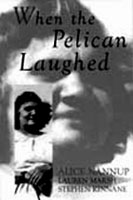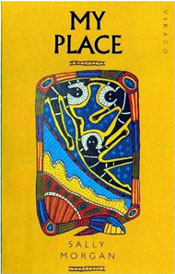Dec 10, 2025
Dec 10, 2025
Writing, whether fiction, poetry, essay or drama, provides a window into society and, as such, is a useful tool in the analysis of sociological, political and anthropological facets of culture and civilization, apart from its intrinsic worth as literature. And when the writing is done by a marginalized, almost forgotten section of the world's populace, its significance increases a hundredfold. This is the case with Australian Aboriginal writing.
The Aborigines are the original inhabitants of Australia and the living representatives of the ancestors of mankind. Discrimination and humiliation are experiences familiar to Aboriginal women in double measure - as women and as aborigines. Some of these women have now started telling their stories, often intertwined with the stories of their family and community.
The Aborigines believe that their ancestors sang their land into existence during their travel in the Dreamtime. Those on walkabout, singing the song-lines, maintain its continued existence even after 40,000 years. Each boulder and crevice of the unremittingly immense outback has a song associated with it and, incredible as it may sound, the entire continent can be sung like a musical composition.
These songs acted as travel and navigating aids because the traveler knew the location of each geographical landmark exactly by its place along the song-line. Thus, any deviation from the precision of the song would most certainly bring death to the traveler.
Similarly, and symbolically enough, the narratives of the Aboriginal people emphasize the role of memory as they establish important markers in the authors' long and difficult journey to self-realization, self-worth and identity. Their stories are the search for their roots and their Aboriginality, in which the family plays its own pivotal part as it adds its cache of recollections, long suppressed and buried beyond its own consciousness in an attempt to survive the pain of those memories.
These narratives also trace the Aborigines' fight for survival and their awakening political consciousness leading to the 1967 referendum through which, in a supreme irony of circumstances and colonial angst, they became citizens for the first time in their own land!
The stories recount the ways in which these people struggled to come to terms with their changed circumstances, some managing to adapt while others were consigned to the rubbish heap as they tragically failed to bridge the gap between the two cultures. The stories dwell on the reasons for the increasing role of women in Aboriginal society and are evidence too of the growing number of indigenous women taking to autobiography and the documentation of their family's and community's experiences and history.
 Alice Nannup in her book, "When the Pelican Laughed", affirms and upholds her resistance to white colonization as she constructs her own account of certain historical events like the Aborigines Protection Act that had a profound and grave influence on her life. She hopes that "all people young, old, black, white, will read this book and see how life was for people in my time". Implicit in this statement is her belief that her book is an important document that will help in the rewriting (re-righting?) or reconstruction of history.
Alice Nannup in her book, "When the Pelican Laughed", affirms and upholds her resistance to white colonization as she constructs her own account of certain historical events like the Aborigines Protection Act that had a profound and grave influence on her life. She hopes that "all people young, old, black, white, will read this book and see how life was for people in my time". Implicit in this statement is her belief that her book is an important document that will help in the rewriting (re-righting?) or reconstruction of history.
Ruby Langford's "Don't Take Your Love to Town" gives a graphic account of the effects of Australian governmental legislation on urban Aboriginal families and how the divide between black and white cultures impacted Aboriginal people, more specifically women as wives and mothers.
 Sally Morgan's "My Place" is not pure autobiography, history or novel but rather an eclectic mix of all these - it draws on various available literary devices and genres and also relies extensively on library research, which further validates the historical, sociological and anthropological content of the book. "My Place" is not just Sally Morgan's story. Since it includes the life stories of her mother, grandmother and great-uncle, it is also biographical.
Sally Morgan's "My Place" is not pure autobiography, history or novel but rather an eclectic mix of all these - it draws on various available literary devices and genres and also relies extensively on library research, which further validates the historical, sociological and anthropological content of the book. "My Place" is not just Sally Morgan's story. Since it includes the life stories of her mother, grandmother and great-uncle, it is also biographical.
She says, "There's almost nothing written from a personal point of view about the Aboriginal people...No one knows what it was like for us...A lot of our history has been lost..." It is clear then that the book goes beyond personal histories and is visualized in terms of a social document. She states that her reason for writing the book is to let people know what has been done to the Aboriginal people, how history has been distorted and misrepresented. "All the history's about the white man," says Sally's mother. This, then, is meant to be the Aboriginal version of history.
Sally's family history, as that of countless other Aborigines, is underlined by the laws and governmental policies that affected the lives and personalities of so many of her relatives. In writing about all this, by bringing it all out into the open, the book evolves into a powerful political statement.
The writing of all these women, without exception, reveals their concern about the onslaught of white civilization on the Aboriginal way of life and the dispossession of Aboriginal land and holy sites. These writers have attempted to create an awareness of the injustices perpetrated on Aborigines in the past (and which have not completely ended yet) and their own desire to be part of the majority culture and governance of Australia.
The stories dwell on the facts of colonization that are only just coming out: the refutation of the fiction of Australia as having been 'terra nullius' (empty land) on which the white man settled through 'peaceful' means; the impact of immigration on its society and policies; a definition of Aboriginal rights and an attempt to shift their location from the periphery to the centre.
Autobiographies of individuals from majority communities is markedly different from those of minority communities in that the latter are intrinsically societal because the writers' experience can be viewed as common to or illustrative of the group or community to which they belong rather than as personal or unique. The creation of the self in an autobiography is therefore a social act.
 One can see parallels of the Aboriginal writing experience in Indian Dalit writing where the expression of a community's feelings is channeled through the life testimonies of Om Prakash Valmiki (Joothan), Surajpal Chauhan (Tiraskrit), Kumud Pawde (Antahspot), Shantabai Dani (Ratran Deen Amha), Shantabai Kamble (Majya Jalmachi Chittrakatha), Bama (Karukku) and others. The similarities are uncanny. Their entire life, as too the Aboriginals, is a record of their struggle to 'survive between cultures' - the majority community on the one hand and extreme poverty, hunger, violence and the worst of all, being an untouchable/Aborigine, on the other.
One can see parallels of the Aboriginal writing experience in Indian Dalit writing where the expression of a community's feelings is channeled through the life testimonies of Om Prakash Valmiki (Joothan), Surajpal Chauhan (Tiraskrit), Kumud Pawde (Antahspot), Shantabai Dani (Ratran Deen Amha), Shantabai Kamble (Majya Jalmachi Chittrakatha), Bama (Karukku) and others. The similarities are uncanny. Their entire life, as too the Aboriginals, is a record of their struggle to 'survive between cultures' - the majority community on the one hand and extreme poverty, hunger, violence and the worst of all, being an untouchable/Aborigine, on the other.
After centuries of suppression, the Aborigines and the Dalits now have storytellers who are making the facts of their past and present existence known to the world. Their struggle against genocide, discriminatory laws, rape, incest and other atrocities is now out in the open, determined as they are to communicate their history through their storytellers.
In the words of writer Geeta Dharmarajan: "To know ourselves fully, we need the eyes of the storyteller, that fictioneer whose senses are always aquiver, like the leaves of the peepul, catching the earliest murmur of wind. They are the eyes and ears of a whole people, with the quickened ability to touch us to the quick, raise that hard-to-arouse anger and outrage to defend the greatest good, the most private good."
(The writer teaches English in a college in Rajasthan. She has a Ph.D. in Australian literature and is an award-winning translator in Tamil, Hindi and English.)
03-Mar-2007
More by : Malati Mathur